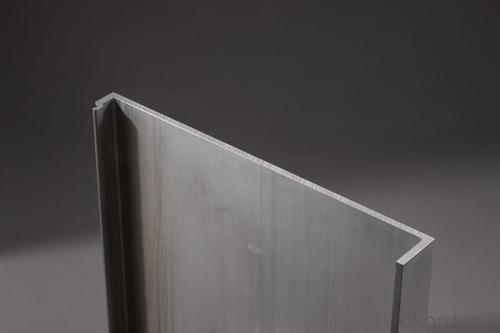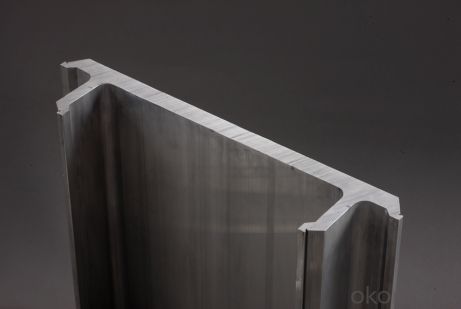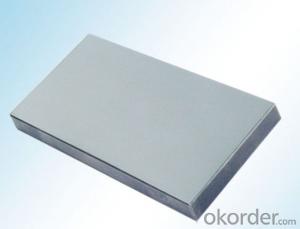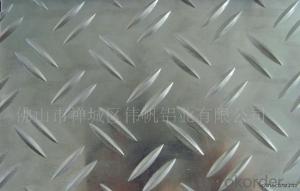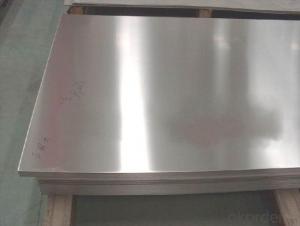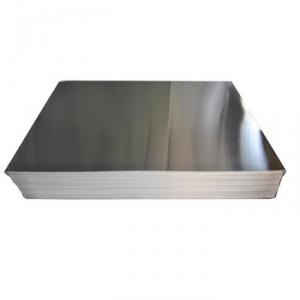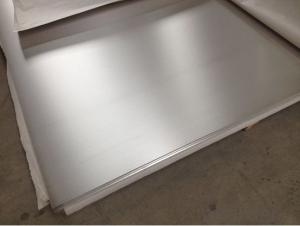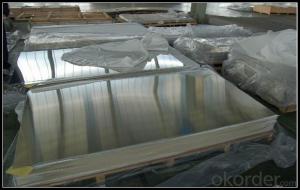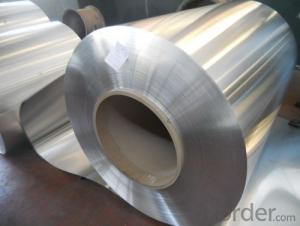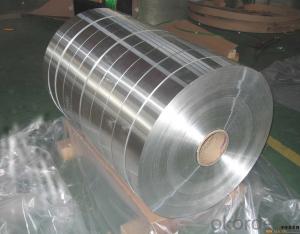Sheets of 063 Aluminum 25lbs 4 8 Sheet - LMetro Mount Pad for Draft Simll,7005-T6 for Train
- Loading Port:
- Shanghai
- Payment Terms:
- TT or LC
- Min Order Qty:
- 1 m.t.
- Supply Capability:
- 1000 m.t./month
OKorder Service Pledge
OKorder Financial Service
You Might Also Like
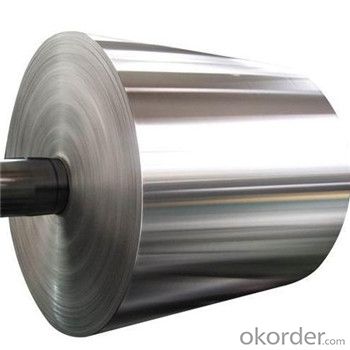 7XXX series aluminum alloy is mainly added zinc and also a small amount of magnesium and copper. Some of the super-hard alloys among this series are nearly as hard as steel due to the addition of zinc, lead, magnesium and copper to the composition. It can be strengthened by heat treatment. Main applications: aviation sector (strength-bearing parts and undercarriage for airplanes), rockets, propellers, space-crafts
7XXX series aluminum alloy is mainly added zinc and also a small amount of magnesium and copper. Some of the super-hard alloys among this series are nearly as hard as steel due to the addition of zinc, lead, magnesium and copper to the composition. It can be strengthened by heat treatment. Main applications: aviation sector (strength-bearing parts and undercarriage for airplanes), rockets, propellers, space-crafts
(1).Grade Alloy: 1050,1060,1070,1100,3003.
(2).Producing Standard: ASTM,EN,DIN,JP,CN.
(3).Temple Level: O(soft) ,H14,H24,etc.
(4).Thickness:0.3mm-3.0mm
(5).Diameter:50-1250mm
Coal is extracted from the ground by coal mining, either underground by shaft mining, or at ground level by open pit mining extraction. Since 1983 the world top coal producer has been China.In 2011 China produced 3,520 million tonnes of coal – 49.5% of 7,695 million tonnes world coal production. In 2011 other large producers were United States (993 million tonnes), India (589), European Union (576) and Australia (416).[9] In 2010 the largest exporters were Australia with 328 million tonnes (27.1% of world coal export) and Indonesia with 316 million tonnes (26.1%),while the largest importers were Japan with 207 million tonnes (17.5% of world coal import), China with 195 million tonnes (16.6%) and South Korea with 126 million tonnes (10.7%).
- Q: Can aluminum sheets be soldered?
- No, aluminum sheets cannot be soldered using traditional soldering methods. However, alternative techniques such as specialized soldering alloys, fluxes, or adhesives can be used to join aluminum sheets together.
- Q: What are the common applications of aluminum sheets in construction?
- Aluminum sheets have various applications in the construction industry due to their unique properties and versatility. Some of the common applications of aluminum sheets in construction include roofing, siding, and cladding. Aluminum sheets are lightweight yet durable, making them ideal for roofing applications as they can withstand harsh weather conditions, such as strong winds and heavy rainfall, without corroding or deteriorating. In siding applications, aluminum sheets are commonly used due to their ability to resist rust and corrosion. They provide an aesthetically pleasing finish to buildings, enhancing their overall appearance. Additionally, aluminum sheets can be easily shaped and bent to fit the desired design, making them suitable for curved or intricate architectural designs. Cladding is another common application of aluminum sheets in construction. Aluminum cladding is used to cover the exterior walls of buildings, providing insulation and protection against weather elements. It helps to reduce the energy consumption of buildings by acting as a thermal barrier, keeping the interior cool in summer and warm in winter. Aluminum cladding is also fire-resistant, making it a safe choice for construction projects. Moreover, aluminum sheets are frequently used in the construction of windows and doors. Their lightweight nature makes them easy to handle and install, while their strength ensures durability and longevity. Aluminum sheets can be powder-coated or anodized, allowing for a wide range of color options to suit different architectural styles and preferences. Overall, the common applications of aluminum sheets in construction encompass roofing, siding, cladding, windows, and doors. Aluminum's lightweight, durable, and corrosion-resistant properties make it an excellent choice for various construction projects, providing both functional and aesthetic benefits to buildings.
- Q: Is it feasible to utilize aluminum sheets in constructing carports and garages?
- <p>Yes, aluminum sheets can be used for carports and garages. They are lightweight, durable, and resistant to corrosion, making them a popular choice for outdoor structures. Aluminum sheets are also easy to install and maintain, and they can be designed to withstand various weather conditions. However, it's important to consider the thickness and quality of the aluminum to ensure it can bear the weight and withstand potential damage from weather elements.</p>
- Q: Which explains aluminum's resistance to corrosion? Any aluminum oxide that forms readily falls off the metal and exposes the corrosion-resistant metal. The aluminum oxide that forms adheres to the metal surface. The reduction half-reaction Al3+(aq) + 3e- ---gt; Al(s) occurs readily. The standard reduction potential for the Al3+/Al half-reaction is above the standard reduction potential for the O2/H2O half-reaction.
- The fourth one.
- Q: i've been looking at stove top espresso coffee makers and they are all made of either aluminum or stainless steel. so i wonder is one metal any better than the other as far as coffee makers go? i thought before i actually buy one i'd like to hear from you - do you have a stove top espresso maker? what metal is it and what do you think of it? looking forward to reading your thoughts - thanks everyone!cheers!
- It's actually a lot better
- Q: What are the different types of surface treatments available for aluminum sheets?
- Aluminum sheets can be treated in a variety of ways to achieve specific purposes and unique characteristics. Anodizing, painting, powder coating, and polishing are some of the most commonly used surface treatments for aluminum sheets. Anodizing involves the creation of a thick oxide layer on the surface of the aluminum sheet. This treatment not only enhances the appearance by providing a range of colors but also increases corrosion resistance and durability. Anodized aluminum sheets are widely utilized in architecture, automotive parts, and electronics. Painting is another popular surface treatment for aluminum sheets. It entails applying a layer of paint to enhance appearance and provide additional protection against corrosion and wear. Painted aluminum sheets are commonly seen in signage, building facades, and decorative applications. Powder coating is a type of surface treatment where a dry powder is applied to the aluminum sheet and then heated to create a protective layer. This treatment offers excellent durability, resistance to weathering, and a wide range of color options. Powder coated aluminum sheets find extensive use in the construction industry, as well as for automotive parts and appliances. Polishing involves buffing the aluminum sheet to create a smooth and reflective surface. This treatment enhances the aesthetics, making it perfect for decorative applications like furniture, jewelry, and architectural accents. In summary, the selection of surface treatment for aluminum sheets depends on desired appearance, functionality, and application requirements. Each treatment provides distinct advantages and characteristics, allowing for versatility and customization in various industries.
- Q: Can aluminum sheet be used for architectural façade systems?
- Indeed, architectural façade systems can make use of aluminum sheet. The lightweight, durable, and corrosion-resistant properties of aluminum make it a favored option for building exteriors. It can be easily manipulated and fabricated into a plethora of shapes and sizes, thus rendering it suitable for the creation of intricate designs and architectural elements. Moreover, aluminum can be coated or treated in various ways to enhance its appearance and shield it from weathering. The versatility, aesthetic appeal, and long-term cost-effectiveness of aluminum sheet make it an exceptional selection for architectural façade systems.
- Q: I have some carbon arrows for my bow but I was wondering if aluminum arrows penetrate farther into a deer because they weigh more. I read somewhere that they do but I just wanted to confirm that.
- Considering a modern bow at 65 lbs with a carbon shaft arrow and decent broadhead will go clean through a deer, I wouldn't worry about trying to increase penetration, as it's just going to go further into the ground on the other side of the deer.
- Q: What are the different methods for engraving aluminum sheets?
- There are several different methods for engraving aluminum sheets, each with its own advantages and applications. 1. Laser engraving: This is one of the most popular methods for engraving aluminum sheets. It uses a laser beam to vaporize the aluminum surface, creating a permanent and precise engraving. Laser engraving offers high precision, speed, and versatility, making it suitable for a wide range of applications. 2. Mechanical engraving: This method involves using a mechanical tool, such as a rotary cutter or diamond-tipped tool, to physically remove material from the aluminum surface. Mechanical engraving can achieve deep and detailed engravings, making it suitable for applications where durability and depth are important. 3. Chemical etching: Chemical etching involves using chemicals to selectively remove material from the aluminum surface. It is a highly precise method that can create intricate and detailed designs. Chemical etching is often used in industries such as electronics and aerospace, where precision and high-quality finishes are required. 4. CNC milling: Computer Numerical Control (CNC) milling is a method that uses a computer-controlled machine to remove material from the aluminum sheet. It can achieve precise and complex engravings, making it suitable for applications that require intricate designs or 3D engravings. 5. Hand engraving: Hand engraving involves using handheld tools, such as gravers or chisels, to manually create engravings on the aluminum surface. While it may not offer the same level of precision as other methods, hand engraving allows for artistic freedom and customization. Each method has its own advantages and limitations, so the choice of engraving method depends on factors such as the desired design, level of detail, production volume, and budget.
- Q: What is the fatigue strength of aluminum sheets?
- The fatigue strength of aluminum sheets varies depending on several factors such as the alloy composition, thickness, surface condition, and the specific loading conditions. Aluminum alloys generally exhibit good fatigue strength, particularly when compared to other metals. The fatigue strength of aluminum sheets is typically determined through fatigue testing, where specimens are subjected to cyclic loading until failure. The S-N curve, which represents the relationship between the number of cycles to failure (N) and the applied stress amplitude (S), is used to characterize the fatigue behavior of aluminum sheets. Aluminum alloys, such as 2024-T3 and 6061-T6, commonly used in aerospace and automotive industries, have high fatigue strengths and can withstand millions of cycles at certain stress levels. For example, 2024-T3 aluminum alloy has a fatigue strength of approximately 105 MPa (15,000 psi) at 10^6 cycles, whereas 6061-T6 aluminum alloy has a fatigue strength of around 96 MPa (14,000 psi) at the same number of cycles. It is important to note that the fatigue strength of aluminum sheets can be influenced by various factors, such as the presence of surface defects, corrosion, temperature, and loading frequency. Proper surface preparation, including smoothing and removing sharp edges, can increase the fatigue strength of aluminum sheets. Additionally, the use of proper stress relief treatments and design considerations, such as avoiding stress concentrations and optimizing joint design, can also improve the fatigue performance of aluminum sheets. Overall, the fatigue strength of aluminum sheets is generally considered to be good, but it is important to consider the specific alloy, thickness, surface condition, and loading conditions to accurately determine and optimize the fatigue performance in practical applications.
Send your message to us
Sheets of 063 Aluminum 25lbs 4 8 Sheet - LMetro Mount Pad for Draft Simll,7005-T6 for Train
- Loading Port:
- Shanghai
- Payment Terms:
- TT or LC
- Min Order Qty:
- 1 m.t.
- Supply Capability:
- 1000 m.t./month
OKorder Service Pledge
OKorder Financial Service
Similar products
Hot products
Hot Searches
Related keywords


